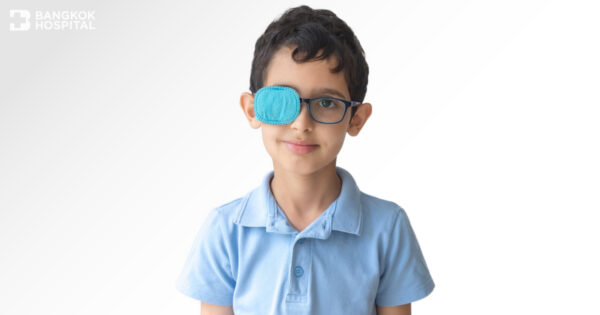Lazy Eye Can Lead To Blindness If Untreated
2 minute(s) read

Share
Although you have probably heard of the term “lazy eye or amblyopia” before, a lot of parents do not know much about this condition. It is estimated that 3 to 5% of the general population suffers from this form of visual impairment. If not treated early, an amblyopic eye may never develop good vision and may even become functionally blind. With early diagnosis and treatment, the sight in the lazy eye can be restored.
What is lazy eye?
Amblyopia or lazy eye occurs when the vision of one eye is weakened by the brain suppressing or ignoring its images and favoring the other eye. Babies are not born with good vision in each eye. Instead, they must develop it between the time of birth till 7 years of age by regularly using each eye, where an identical focused image falls on the retina of each eye. If this does not occur in one or both eyes, vision will not develop properly. Instead, vision will be reduced and the affected eye becomes amblyopic. Therefore, it is important to detect this condition early to prevent permanent vision loss.
What causes amblyopia or lazy eye?
- Unequal refractive errors in both eyes
One eye may have significant uncorrected nearsightedness or farsightedness, while the other eye does not. In some cases one eye may have significant astigmatism and the other eye may not.
- Strabismus
Strabismus is the most common cause of amblyopia. To avoid double vision caused by poorly aligned eyes, the brain ignores the visual input from the misaligned eye, leading to amblyopia in that eye.
- Structural problem with the eye
This is lazy eye caused by something that obstructs light from entering and being focused in a baby’s eye, such as a congenital cataract, corneal ulcer, and drooping eyelid.
What treatments are available?
- Assess visual acuity in order to diagnose the condition
- Correct any underlying problems in the affected eye, like nearsightedness (glasses), farsightedness (glasses), or astigmatism (surgery)
- Usually, patching of the “good” eye is needed to force the brain to pay attention to the visual input from the amblyopic eye and enable normal vision development to occur in that eye
- Close follow up with an ophthalmologist
Prevention
Amblyopia often starts before there is any obvious sign that something is wrong. This is why young children need to have their eyes checked yearly beginning at the age of 2.
If your baby is premature, the eye check-up needs to be done earlier. All preterm babies are at increased risk of refractive errors, particularly myopia, astigmatism, and strabismus. It is also recommended that children have eye check-up at the age of 3-5 years to make sure that his or her vision is functioning properly.
If amblyopia is not treated early, specifically during the period of visual development between birth and 7 years of age, it can result in a permanent visual defect or loss of depth perception. If you suspect lazy eye in your child, consult a doctor right away. The consequences of lazy eye can be severe and unnecessary, particularly when the symptoms are treatable.
For more information, please contact
Bangkok Eye Center
Sat 08.00 am. - 05.00 pm.
Sun 08.00 am. - 04.00 pm.
Share
